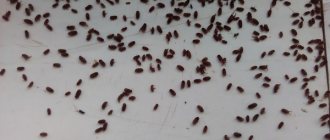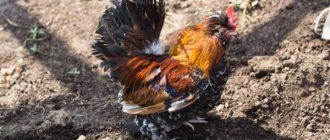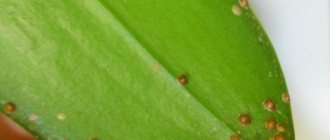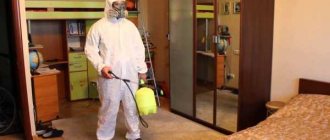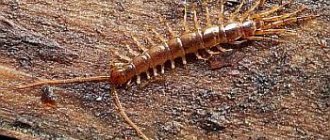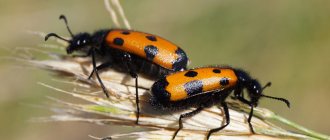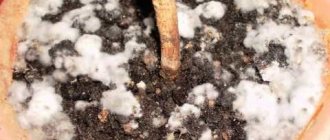Ground beetles
Ground beetles (Carabidae) are mostly voracious predators. Strong legs and powerful jaws allow them to hunt successfully, destroying caterpillars, slugs and beetles. They live everywhere. The fauna of Russia and neighboring countries includes approximately 3,000 species.
A significant portion of ground beetles are black, but there are also colorful, bright exceptions
Other ground insect pests
Most often, the roots of garden and berry crops suffer from underground pests, which eat various insects or their larvae living in the soil:
- centipedes - small individuals, breed in compost heaps, eat flower bulbs, strawberry fruits, strong population growth is observed at high humidity;
- earthworms and earthworms - although they are beneficial by digging up the top layer of soil, they have a negative effect on the adhesion of roots and soil, which can cause plants to be pulled underground;
- cutworm caterpillars (winter and exclamation) - in the spring months they live underground and feed on the roots of vegetable crops, preferring cabbage, carrots and seedlings of ornamental flowers, they also gnaw leaves and root vegetables;
- wireworm larvae (striped or bread nutcracker) - attack vegetable crops, strawberry and strawberry plantings, eating small roots and larger roots, damaging root crops and flower bulbs;
- May beetle larvae - live for several years in the soil, feeding on underground parts of plants (vegetables, shrubs and fruit trees);
- springtails - white jumping insects settle in the ground near garden and house plants.
Water bugs
The aquatic, predominantly carnivorous beetles include diving beetles (Dytiscidae), whirligigs (Gyrinidae), and water-loving beetles (Hydrophilidae). The first two families are active predators not only at the adult stage, but also at the larval stage; water lovers are omnivores, but mainly feed on plant foods.
The large black water lover (lat. Hydrophilus piceus) reaches 48 mm in length
How long do these insects live?
The Mike beetle lives very little. Their entire life span is until reproduction. The male dies immediately after mating. The female dies after laying eggs.
The female of this insect manages to lay from a couple to ten thousand eggs. She lays eggs in peculiar nests. These are not particularly deep holes, going 25-30 millimeters into the soil. She makes the masonry in the form of a heap and sprinkles it with earth. The female of this beetle never starts arranging a new nest without making sure that the previous one is completely complete.
Dead eaters
The orderlies of our fields and forests are carrion eaters (Silphidae). A large number of these beetles accumulate near the corpses of dead animals, dig under the corpse, scooping out the soil from under it. Thus, they lower the corpse into the ground, where they then eat it together with their larvae. One of the few beetles that care for their offspring: adults feed the larvae, although they are capable of feeding on their own.
Gravedigger, or black-whiskered gravedigger (lat. Nicrophorus vespilloides)
Spider mite
The invasion of small red bugs in the garden in the ground or on the leaves of fruit trees means the appearance of spider mites in the garden plot. Their main diet consists of plant juices, which they extract from leaves and young shoots. The result of parasitism is damaged plant parts covered with a thin white cobweb.
The size of red mites is no more than 1 mm, but they live in large colonies and can cause significant damage to garden crops. The leaves begin to become stained, turn yellow, the plant becomes very weak and suffers from a lack of chlorophyll.
In the fight against insect pests of gardens in this situation, treatments with soap solution, garlic or onion infusion help. Insecticides (Aktellik, Neoron) and biological products (Fitoverm, etc.) are used as insecticides.
Lamellaridae
Lamellar beetles (Scarabaeidae), like many other beetles, are diversely represented in the tropics. 435 species of scarabaeids have been identified in the fauna of Russia. The largest tropical species is the African goliath, which was previously considered the largest among beetles. But later, a giant creaking creature larger than a goliath was discovered in the tropical forests of America.
Tropical bronze
Medvedka
One of the largest garden insect pests that live underground are mole crickets. They have a large body (up to 6 cm long) of a dark brown color, equipped with digging front legs. Capable of cutting all underground parts of garden crops, including potato tubers and tree roots.
Such brown beetles prefer to settle in the country on moist soils well fertilized with humus.
Over the years, gardeners have developed several methods to combat mole crickets, which include: deep tillage of the soil (at least 15 cm in spring and autumn), construction of trap pits (diameter 30 cm, depth up to 79 cm) with manure, planting plants in cups, and also biological (Metarizin) and chemical agents.
Mole cricket and snow beetle
Stag beetle
The stag beetle, a member of the stag beetle family (Lucanidae), is the giant of our forests; its length together with horns is 6-8 cm. This species is common in deciduous and mixed forests. Almost everywhere, the population of this species is low and continues to decline, so it is listed in the Red Books of both Russia and the countries where it lives. Male stag beetles have strong mandibles, similar to deer antlers, with which they fight. The larvae of these six-legged deer live in rotten stumps and hollows for five years before becoming beetles.
Duel between male stag beetles
Alpine barbel
This beetle can be found not only in the Alps - it lives in the Caucasus, the Carpathians, and the Crimea. Handsome longhorned beetles prefer to live in mountain forests.
They live, as a rule, on old and decaying beeches, maples and oaks. Unfortunately, the alpine longhorned beetle is now on the verge of extinction, and its population is constantly declining. This beetle can have not only a blue color - there are individuals with black, gray, and even pale pink hair.
Longhorned beetles are extremely thermophilic, so they can only be seen from July to September.
Zlatki
Gold beetles (Buprestidae) are very beautiful. Golden, green, yellow, with multi-colored spots. All borers have a very durable shell. They feed on leaves or thin bark of plants, causing significant damage to plants. In sunny weather, beetles quickly run from one place to another along tree trunks heated by the sun; No wonder they are called “children of the sun.”
Chrysanthemum on a buttercup flower
Morphological description of the species
Purple or blue tank top (Meloe violaceus) is a beetle from the blister family, the genus tank top. The adult is medium in size, body length is 10-32 mm. The head and pronotum are covered with fine punctures. The elytra are short and diverge to the sides. Representatives of the species do not fly, they do not have wings. The head is triangular in shape, the antennae are clear-shaped, and the eyes are kidney-shaped. The abdomen is large, especially swollen in the female. The body color is dark blue and violet. Limbs with prehensile claws and spurs on the shins.
Information. Sexual dimorphism is expressed in the size of the beetles (the female is larger than the male) and the shape of the antennae. In males, the clear-shaped antennae have bizarre growths in the middle.
Distribution area
Purple jersey beetles are found in Central and Southern Europe. The insects are common in Kazakhstan, East Asia, Iran, Afghanistan and North Africa. In Russia they live in the Caucasus, Siberia and the Primorsky Territory.
Narynniki
Blister beetles (Meloidae) have bright, often spotted warning colors. The blood of these beetles contains cantharidin, a substance that causes deep ulcers on the skin.
Epicauta hirticornis
T-shirt scarred
What kind of insect is this?
This is a beetle that cannot fly. The insect lacks wings. The elytra are shortened, located close to the base, and slightly splayed to the sides at the back. The common beetle is a black or bluish-dark beetle; there are also almost azure-colored specimens. Regardless of color, the body of the beetle has a pronounced metallic tint. When you look at them, you get the impression that their body is made of metal and painted with enamel.
According to the entomological classification, they belong to arthropods, are representatives of Coleoptera and are part of the blister family.
ladybugs
We often encounter small predators - ladybugs (Coccinellidae). These are beneficial insects and are often used in biological control of plant pests.
Ladybugs eat aphids and scale insects
Seven-spotted ladybug
XILIX® Gel fungicide and insecticide in one bottle with a 10-year guarantee!
XILIX® Gel is an innovative development for combating any wood pests such as longhorned beetles, borers, shashel, wood borers, etc. It is also an effective professional biocide that effectively destroys mold, mildew, and copes with wood rot and defects.
Indispensable for the prevention and treatment of wooden structures.
• Destroys termites, borer beetles, bark beetles, wood borers, longhorned beetles, etc. • Economical and easy to use • Safe for people • Strengthens the structure of the wood • Ready to use, the gel does not flow, leaves no traces • Penetrates deeply into the wood
XILIX® Gel is an excellent, safe alternative to phosphine gas fumigation with a 10 YEAR warranty! High efficiency is achieved thanks to properly selected gel components. Biocides and permethrin in the composition give a fantastic insecticidal and fungicidal effect.
Thanks to its thixotropic formulation, the gel works without loss of properties even in a thick layer of wood, thereby reducing the number of applications to obtain the required therapeutic or prophylactic dose of the gel.
Leaf beetles
Among the brightly colored and often poisonous leaf beetles (Chrysomelidae), the Colorado potato beetle, which was brought from North America 100 years ago, is widely known. In its homeland, the striped beetle feeds on wild plants of the nightshade family, and in new conditions it has become a serious pest of potatoes.
The leaf beetle (lat. Chrysolina fastuosa) can feed not only on the leaf beetle, but also on nettles, mint and many other plants
Golden turtle
The “golden turtle” can rightfully be called the most beautiful beetle in the world. It looks like a jewel come to life - you could easily imagine it as a pendant on a pendant.
A very interesting fact about this “miracle of nature” is that the golden turtle can change its color depending on the level of humidity, stress or in case of death.
The “Golden Turtle” is a distant relative of the Colorado potato beetle, which is hated by all owners of gardens and summer cottages.
This beautiful bug is quite small - its size does not exceed 5-7 mm. This insect is widespread in North America.
Weevils
Bristle nodule weevil
Rice weevil
Barn weevil
Bark beetles
Previously, bark beetles were considered a separate subfamily, but now they are classified as weevils. Small beetles, pests of tree species. Adult beetles can make “ticking” sounds by tapping their heads against the walls of tunnels they have gnawed into wood - they can often be heard in old wooden houses at night. A number of species have a device for removing debris that interferes with movement along the passages - a depression in the elytra, which is called... a wheelbarrow! Yes, yes, friends, these are the only bugs with cars.
Great spruce beetle (lat. Dendroctonus micans)
Professionals will help you fight the longhorned beetle
To treat the external surface of a wooden house with Clipper, you can invite a specialist with a cold or hot fog generator. This treatment allows you to evenly cover the entire treated surface with drops of insecticide, spending less time on it and saving on consumables.
Be wary of the proposal to treat your house against insect pests with a combination of Clipper and Bi-58. The poisonous drug Bi-58 is a bright blue liquid containing phosphoric acid esters, which leaves irremovable stains and an ineradicable chemical odor after its use. It is strictly forbidden to use this drug for treating interior spaces.
In the market for services offered by professionals for the destruction of wood-eating insects, the following areas deserve attention:
- Fumigation with Phosphine;
- Microwave disinsection.
- XILIX GEL
These methods have their advantages and disadvantages. They can only be used by specialists who have undergone special training, confirmed by the appropriate certificate.
Nutcrackers
Click beetles have short legs, and if they fall on their backs, it is difficult for them to roll over. To regain support under their feet, they use an original device - something like a lever, protrusions on the chest (they can be seen in the photo below), with which they cling to the abdomen, and, straightening out, jump into the air with a click. The larvae are called wireworms, and many of them cause damage in vegetable gardens by gnawing tunnels in root crops such as potatoes. Some species, such as the blood-red click beetle (so named because of the color of the wing covers), develop in rotten wood and do no harm.
Ocellated click beetle (lat. Alaus oculatus)
Life cycle
Under favorable conditions, winged wings multiply quickly; entomologists often find larvae in the same nest with newly moulted beetles and even with adult individuals, regardless of the time of year. The female is capable of carrying and laying only one egg at a time. In this case, the length of the egg is half the body of the female individual. The bug develops into an adult in a relatively short time - from 32 to 45 days at a temperature of 20°C, going through three larval stages.
Entomologists have discovered the amazing ability of females of some species of winged insects to develop from an unfertilized egg. This phenomenon has a scientific name - thelytokny parthenogenesis.
